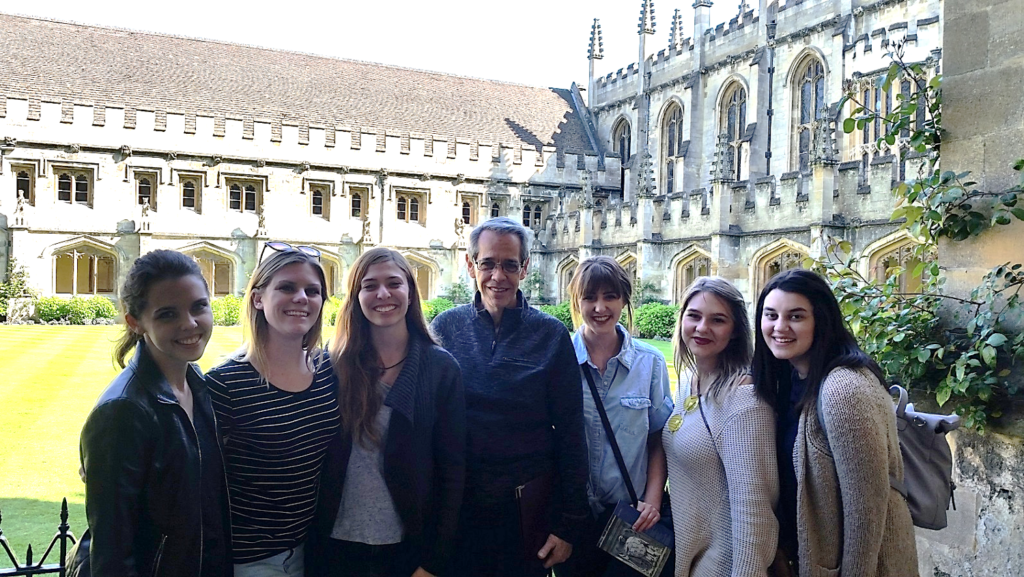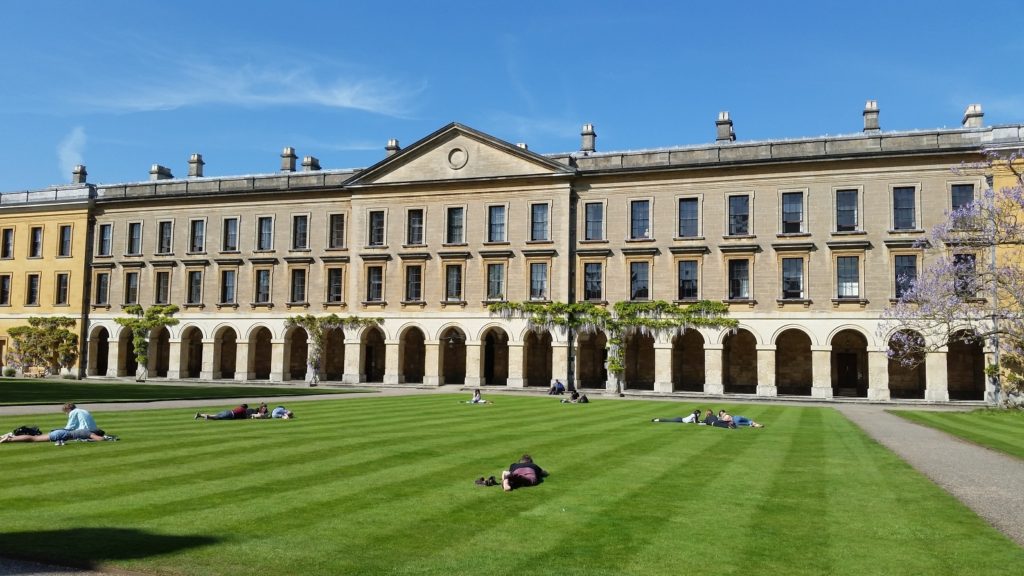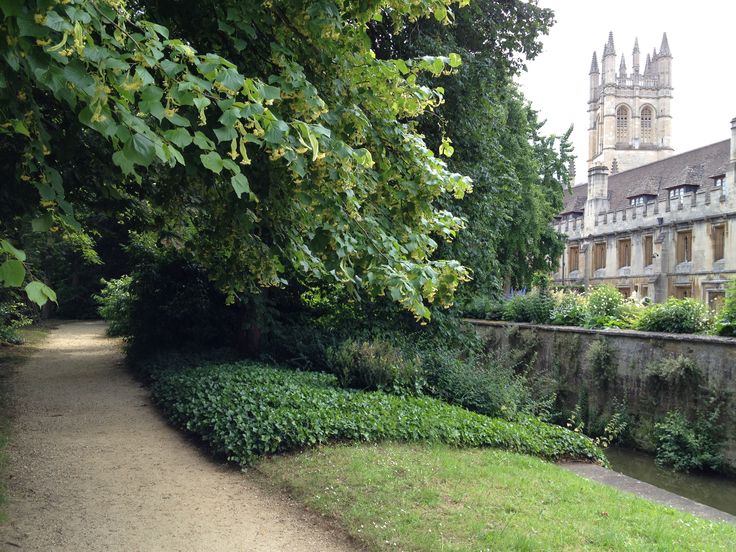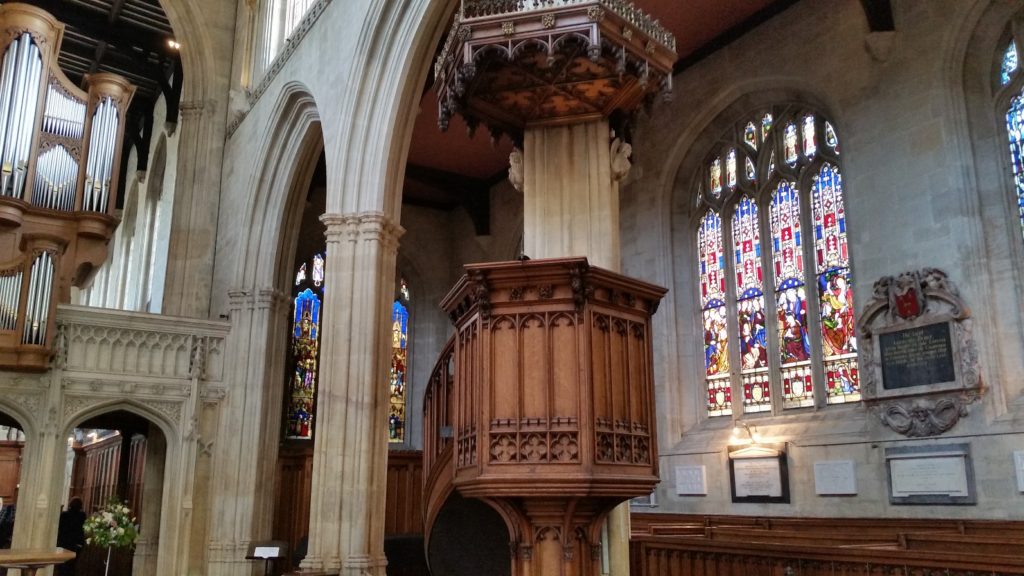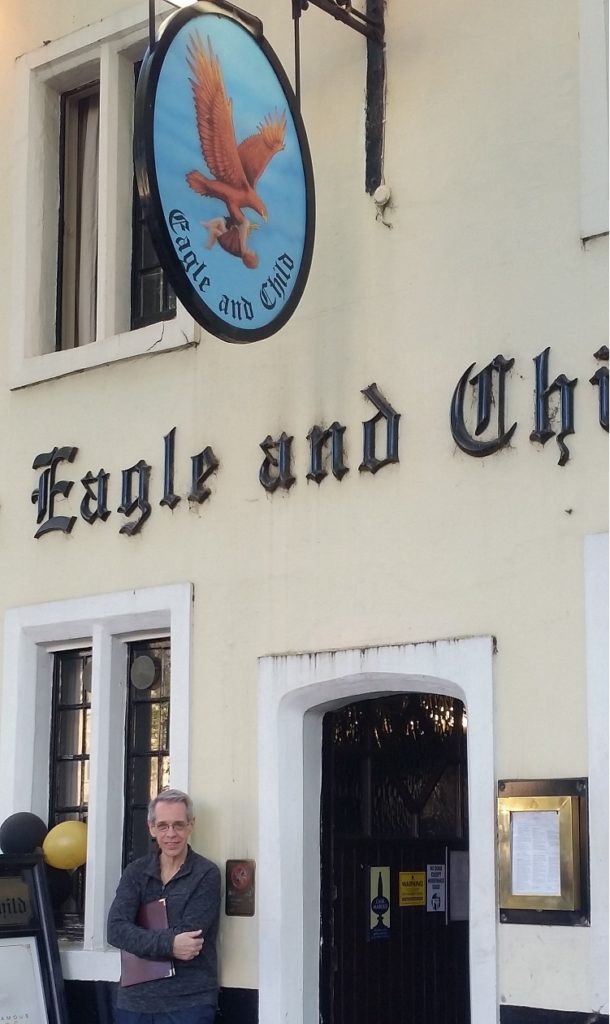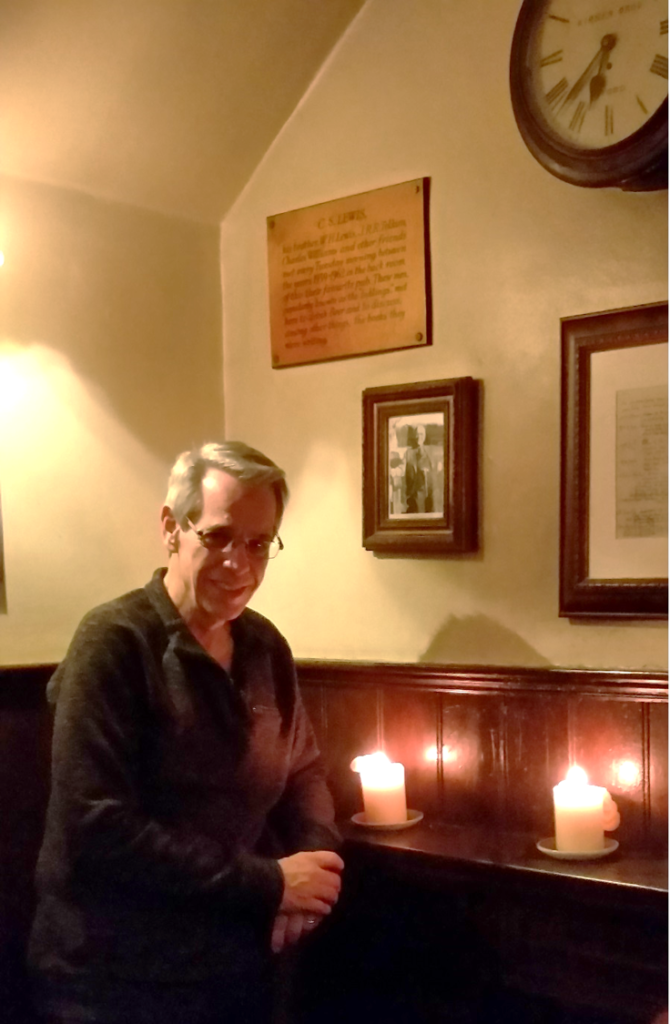Twenty years ago, I had a whirlwind tour of a very small section of Oxford. This time, with my university students, I was able to spend a little more time—not enough, but more directed, more significant, more focused on the sites with which C. S. Lewis was familiar.
Lewis taught at Magdalen College for approximately thirty years. For the first time in my sixty-six years, I was on the same grounds.
Lewis’s rooms were in the New Building (“new” because it wasn’t built until the eighteenth century), top floor, the two windows to the right of the protruding section in the middle.
I neglected to take a picture of the sign that told students to keep off the grass. It would have been humorous.
Next to the New Building was the entrance to Addison’s Walk, a lovely wooded path by the winding river. It was here that Lewis had a long conversation with Tolkien and another Inkling, Hugo Dyson, that convinced him to believe in God.
We also stopped by the University Church of St. Mary the Virgin. It was from this pulpit that Lewis delivered one of the most powerful sermons I’ve ever read: “The Weight of Glory.”
My favorite passage from that sermon is a poignant reminder of how we should view other people:
It is a serious thing to live in a society of possible gods and goddesses, to remember that the dullest and most uninteresting person you talk to may one day be a creature which, if you saw it now, you would be strongly tempted to worship, or else a horror and a corruption such as you now meet, if at all, only in a nightmare. All day long we are, in some degree, helping each other to one or other of these destinations. . . .
There are no ordinary people. You have never talked to a mere mortal. Nations, cultures, arts, civilization—these are mortal, and their life is to ours as the life of a gnat. But it is immortals whom we joke with, work with, marry, snub, and exploit—immortal horrors or everlasting splendours.
What visit to Lewis’s Oxford would be complete without a stop here?
We had our evening meal at the “Bird and Baby.” I was particularly interested in seeing the section where Lewis and his Inklings friends had their weekly get-together. At first, it was filled with diners, so I waited until after we had finished our meal (the Shepherd’s Pie was very good, by the way) and then I was able to get this photo without bothering too many people.
You can’t read the plaque above my head in this picture, but here’s what it says:
What could be better than this for someone who has studied Lewis as much as I have?
How about time spent at C. S. Lewis’s home with Walter Hooper, the American who became Lewis’s close friend and who then has spent the rest of his life as the agent for his literary estate?
That’s what we did on the next day. That’s also what I’ll be posting about tomorrow.

